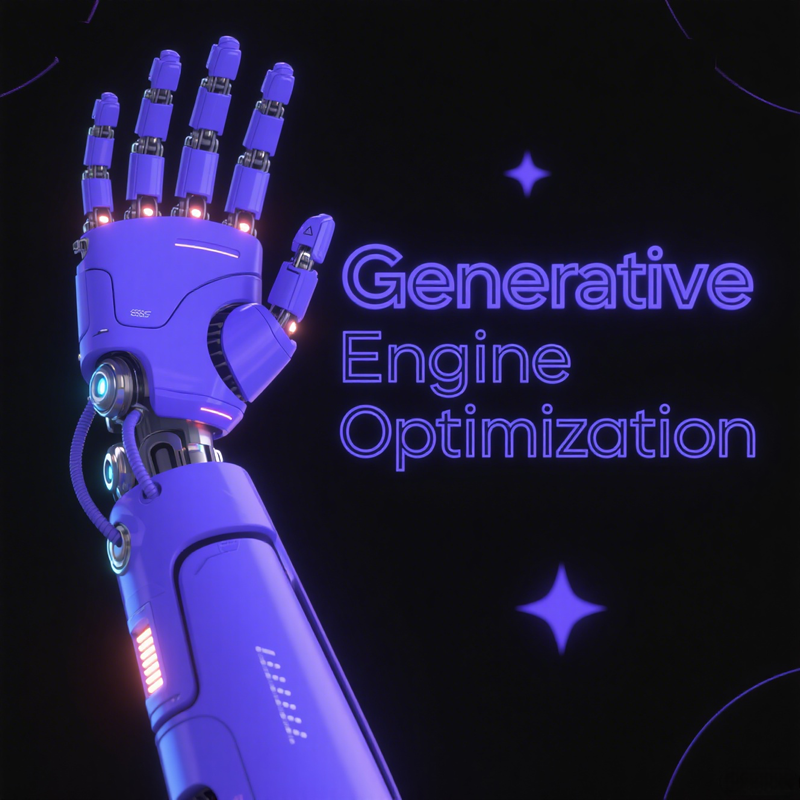What is GEO? GEO vs SEO: The New Gateway to E-Commerce Traffic in the AI Era

Core Takeaways at a Glance
-
SEO (Search Engine Optimization) relies on keywords and webpage structure to help content rank higher on traditional search engines like Google.
-
GEO (Generative Engine Optimization) optimizes content for AI assistants (e.g., ChatGPT, Perplexity) to ensure products are understood, cited, and recommended in natural language Q&A.
-
The rapid rise of AI search is reshaping traffic patterns. GEO is becoming a critical channel for brands to capture "answer-based traffic."
-
Consumers are shifting from "search keywords" to "question-driven scenarios." Content presented as AI-generated answers gains significant exposure and conversion advantages.
-
Brands should proactively develop content strategies centered on "consumer language" to adapt to future search environments.
What is GEO?
GEO (Generative Engine Optimization) is a novel content optimization methodology for AI search and Q&A engines. Its core objectives are: enabling brands' content to be understood and cited by AI, then presented to users as "part of the answer" to gain visibility and conversion opportunities in conversational searches.
Unlike traditional SEO, GEO emphasizes natural language understanding, semantic matching, and structured expression. It optimizes not just webpages, but whether content can be selected, referenced, and rephrased by AI systems.
Applicable Scenarios:
-
Product content appearing in answers from conversational AI (e.g., ChatGPT, Perplexity)
-
Engaging users on platforms like TikTok, Instagram, and Reddit using "question + scenario + style" language
-
Answering natural questions (e.g., "What to wear to a music festival?", "Dresses suitable for nightclubs")
Why is GEO So Important?
Per Gartner’s 2024 report, generative AI will reduce traditional search volume by ~25% before 2026. Enterprises must overhaul content strategies for new traffic channels.
By 2025, generative search engines have evolved beyond product recommendations into closed-loop shopping platforms enabling direct purchases.
-
OpenAI launched native shopping in ChatGPT (April 2025): users browse/buy recommended products within conversations.
-
Perplexity’s "Buy with Pro" (November 2024) integrates product recommendations and purchases into generative Q&A.
Implication: GEO now impacts not just "whether products are recommended" but "whether they are purchased."
Core Differences: SEO vs. GEO
| Dimension | SEO (Search Engine Optimization) | GEO (Generative Engine Optimization) |
|---|---|---|
| Target | Traditional engines (Google, Bing) | AI assistants (ChatGPT, Perplexity, Copilot) |
| Display Format | Webpage links in SERPs | Citations/recommendations in AI-generated answers |
| Content Strategy | Keyword placement, page structure, backlinks | Semantic clarity, structure, AI-citable content |
| Content Format | Long-form text, page optimization | Concise, fact-based, natural language |
| User Behavior Goal | Drive clicks | Be recommended/cited as the answer by AI |
| Success Metrics | CTR, bounce rate, organic traffic | AI citation frequency, brand exposure/sentiment share |
| Typical Use Cases | Product pages, SEO blogs, local services | Trends, news, health, government content, high-semantic-relevance products |
Case Study: SEO vs. GEO for "Sexy Party Dresses"
Using "sexy party dresses" as an example:
| Dimension | SEO Approach | GEO Approach |
|---|---|---|
| User Action | Searches "sexy party dresses," browses category pages | Asks AI: "What to wear to a nightclub?" |
| Strategy | Creates product collection pages (e.g., "Party Dresses") | Identifies scenario + tone + style → Recommends "backless sequin dress" with styling tips |
| Display | Shows a list of products for user filtering | Directly recommends in answer: "This backless sequin dress is perfect for nightclubs." |
In short: SEO relies on user clicks; GEO proactively delivers "answer-based product content" via conversation.
Implementing GEO Optimization
Brands need a "consumer language"-centric system covering content production, structural redesign, and data integration:
| Step | Method |
|---|---|
| 1. Build a Language Library | Collect common AI/social media queries (e.g., "wedding-appropriate dresses," "outfits for travel") |
| 2. Semantic Tagging System | Add tags like "scenario," "mood," "styling intent" to products |
| 3. Scenario-Driven Content | Generate product descriptions using platforms like Trendee (trend/intent-based) |
| 4. Open Structured Data to AI | Provide Schema.org markup; upload product data to AI plugins/APIs |
Why Optimize Product Content Now?
Optimization prepares brands for the future AI-dominated search/recommendation ecosystem. Benefits include:
-
Boost SEO: Cover high-intent keywords → stabilize search traffic.
-
Capture GEO Early-Mover Advantage: Increase likelihood of AI recommending products as "best answers."
-
Enhance UX: Help consumers find suitable products faster → higher satisfaction/conversions.
-
Improve Operational Efficiency: Structured content fuels ad targeting, product selection, and data analysis.
Investing in SEO + GEO builds not just search traffic dominance, but long-term digital assets.
Now is the best time to bridge "consumer language → product content."
Dr. Huina Mao: A "National Leading Talent" in the field of artificial intelligence. She holds a Ph.D. in Informatics from Indiana University, USA, with 15+ years of R&D experience in AI and NLP. A pioneering scholar who first proposed the "Twitter Mood Index," she has published 30+ academic papers cited over 10,000 times and holds multiple U.S. patents. Her research findings have been featured in 150+ international media outlets, including CNN, BBC, and TIME Magazine. She was honored among TIME Magazine's "50 Best Inventions" (2011) and received the "Outstanding Young Scientist Award" from Oak Ridge National Laboratory, one of the world's top ten leading laboratories.